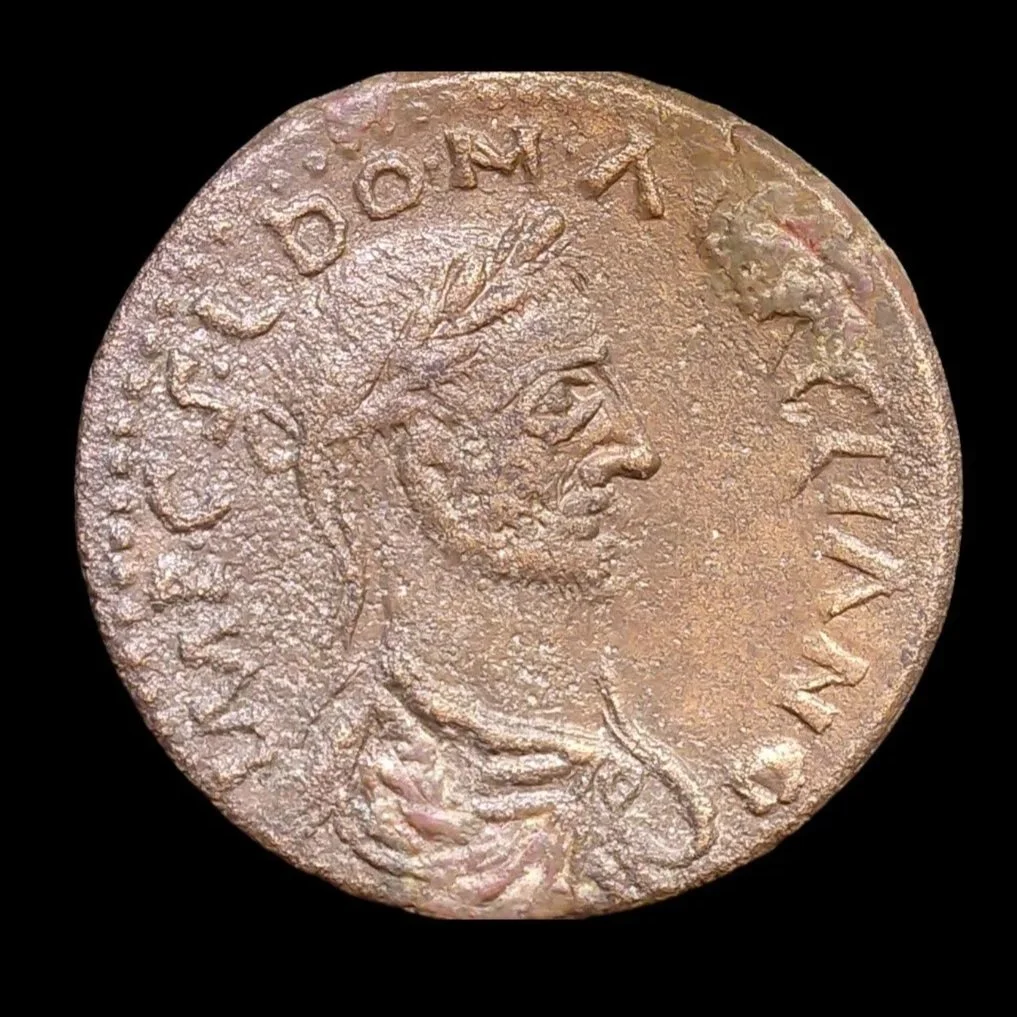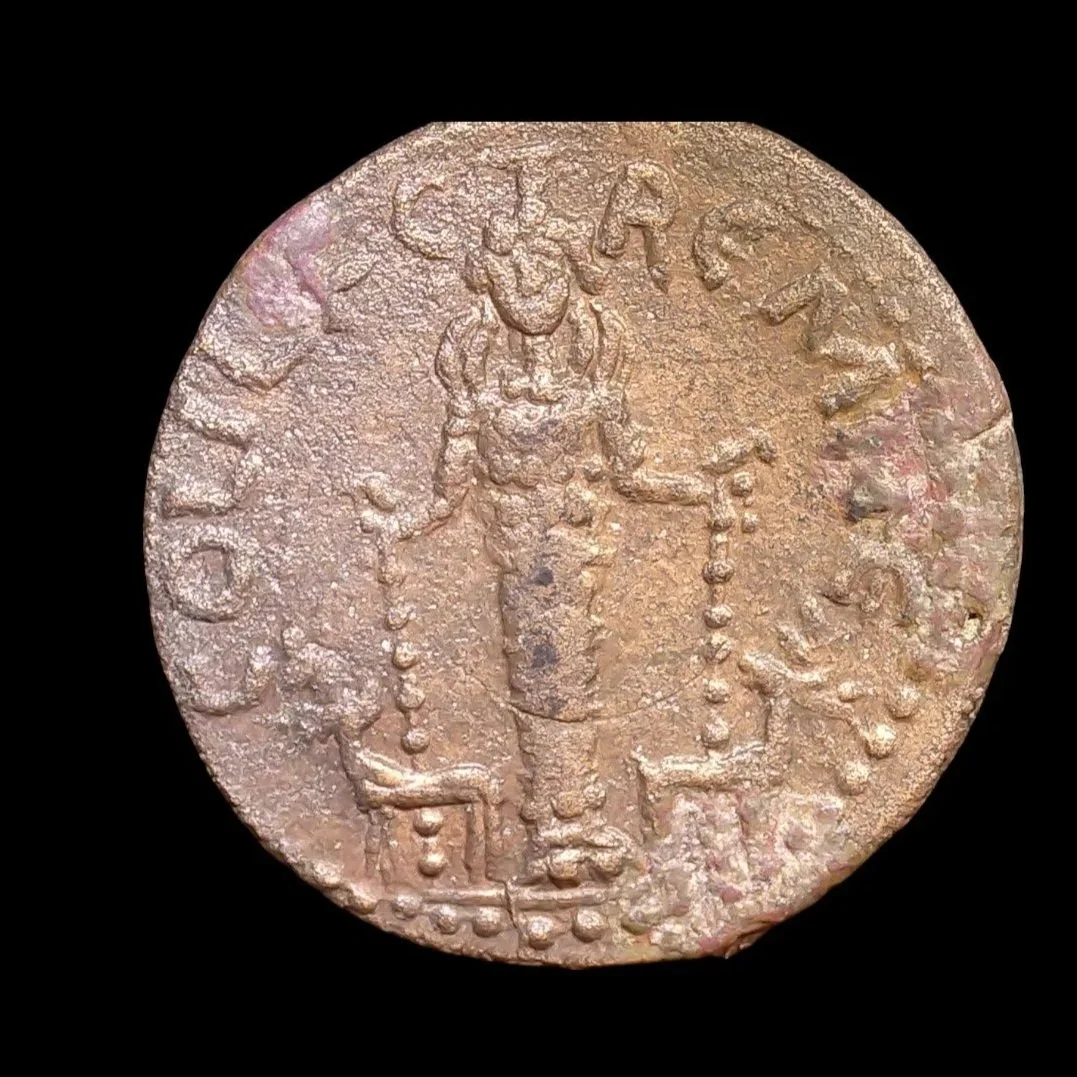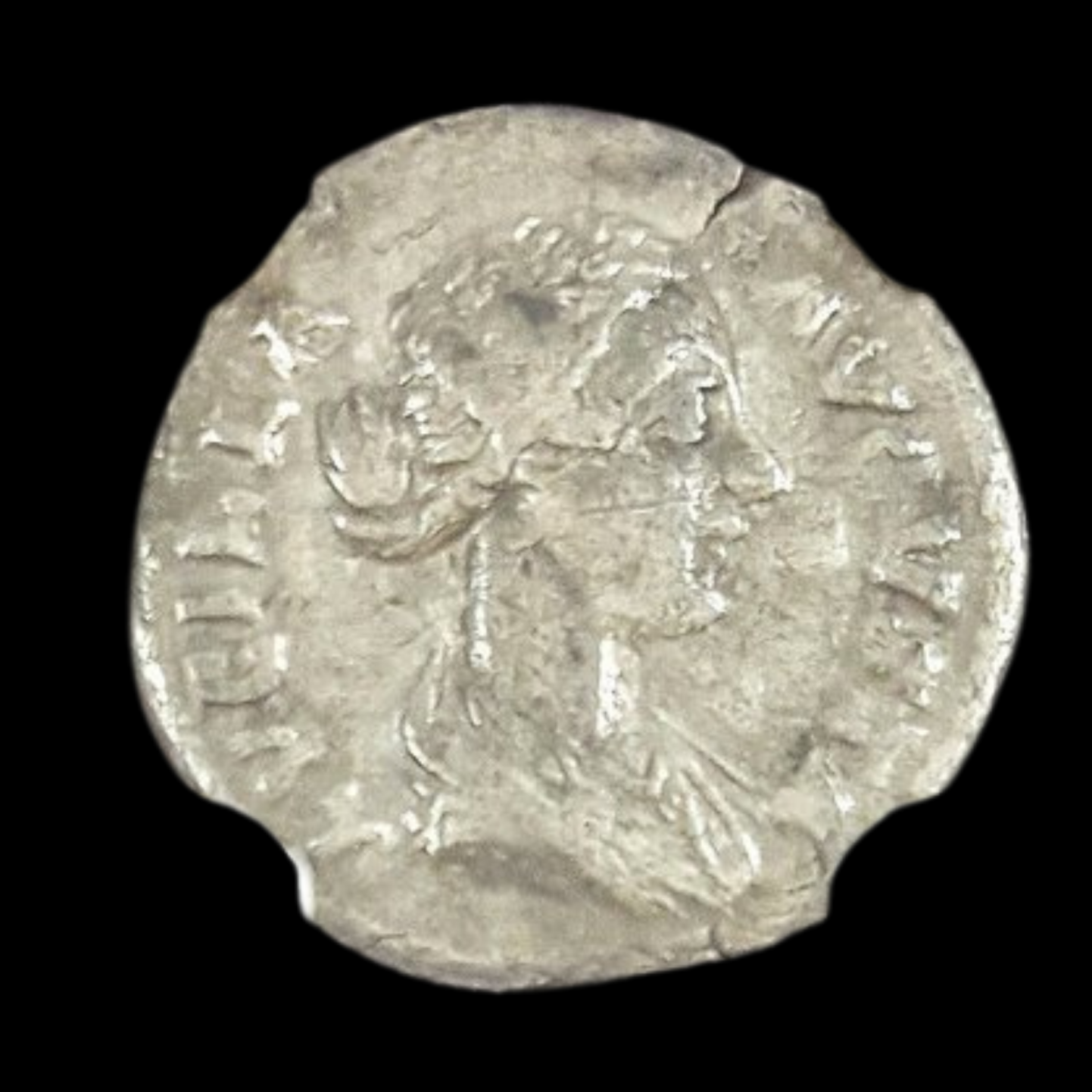 Image 1 of 7
Image 1 of 7

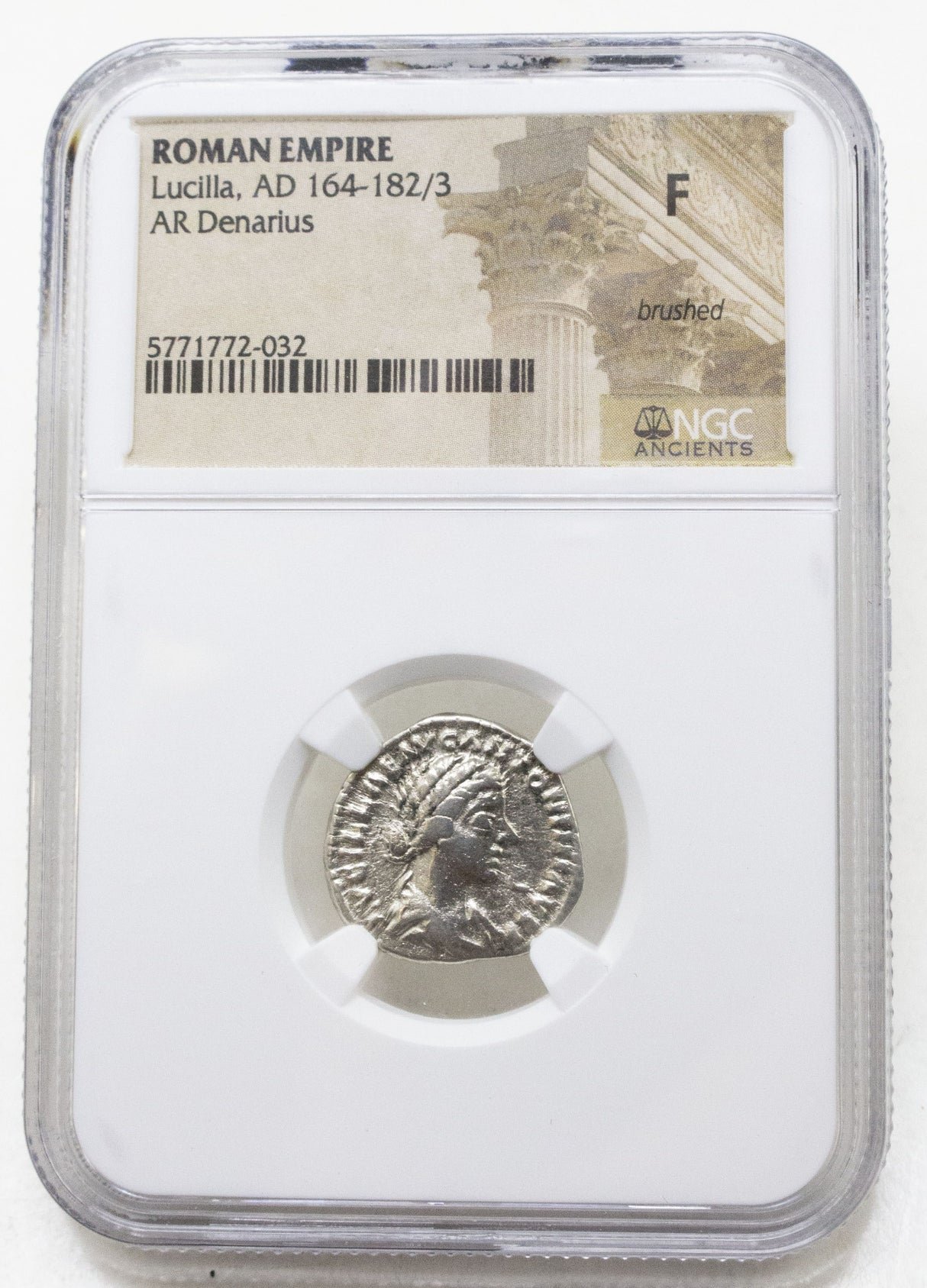 Image 2 of 7
Image 2 of 7

 Image 3 of 7
Image 3 of 7

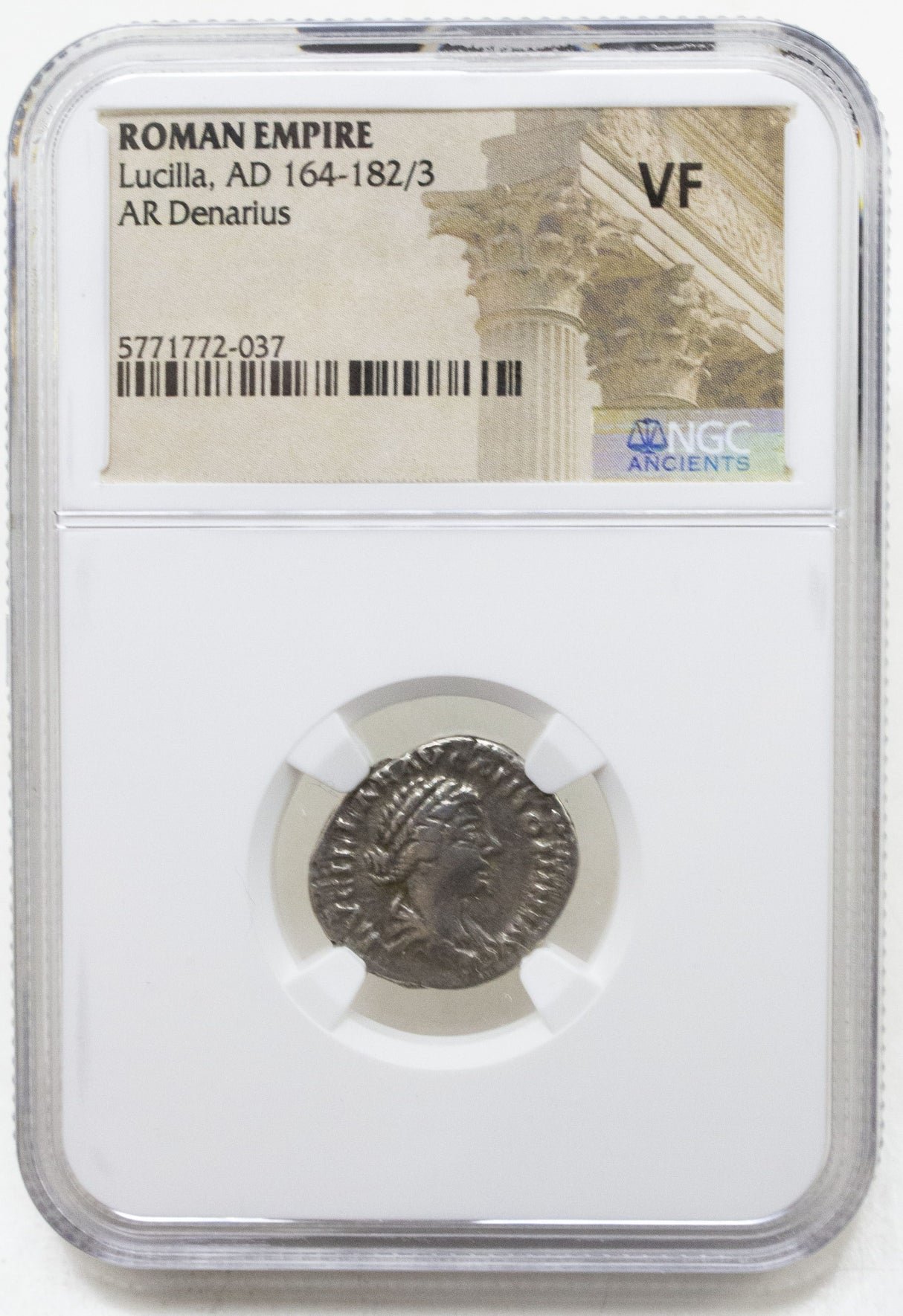 Image 4 of 7
Image 4 of 7

 Image 5 of 7
Image 5 of 7

 Image 6 of 7
Image 6 of 7

 Image 7 of 7
Image 7 of 7








Roman Silver Coin of Empress Lucilla (about 1,850-1,870 years ago)
The coins shown are representative examples of the grade and type, but not the actual specimens for sale. For details on NGC’s grading standards and definitions, please refer to our NGC Grading page.
This silver denarius portrays Lucilla, a Roman imperial woman who was both daughter of the philosopher-emperor Marcus Aurelius and wife to his co-ruler Lucius Verus. Born into the height of imperial privilege during Rome's prosperous Antonine era, Lucilla's life illustrates the complex and often dangerous position of women in the imperial family, where political influence came with substantial risks.
Coin Description:
Front side: Portrait of Empress Lucilla facing right, typically showing her with an elaborate hairstyle characteristic of Antonine-era imperial women, with Latin inscription stating her name and titles
Back side: Likely depicts a female deity such as Venus, Juno, Ceres, or a personification like Concordia (Harmony) or Fecunditas (Fertility), with accompanying Latin inscription
Technical Details:
Silver composition
Denomination: Denarius
NGC certified in protective slab
Minted between approximately 164-182 AD
Condition as certified by NGC
Historical Significance: Lucilla's life reflects the complex intersection of family, politics, and power in the Roman imperial system. As daughter of Marcus Aurelius and wife of his co-ruler Lucius Verus, she held the prestigious title of Augusta during their joint reign. After Verus's death in 169 AD, her brother Commodus eventually became emperor, but their relationship deteriorated. According to historical accounts, Lucilla participated in a failed assassination plot against her brother in 182 AD, resulting in her exile and eventual execution. Her dramatic life has inspired fictional portrayals in modern entertainment, including her character in the Gladiator films. This coin represents the carefully cultivated public image of imperial women during Rome's Antonine dynasty, when imperial propaganda emphasized family stability and virtue even while personal and political tensions simmered beneath the surface.
The coins shown are representative examples of the grade and type, but not the actual specimens for sale. For details on NGC’s grading standards and definitions, please refer to our NGC Grading page.
This silver denarius portrays Lucilla, a Roman imperial woman who was both daughter of the philosopher-emperor Marcus Aurelius and wife to his co-ruler Lucius Verus. Born into the height of imperial privilege during Rome's prosperous Antonine era, Lucilla's life illustrates the complex and often dangerous position of women in the imperial family, where political influence came with substantial risks.
Coin Description:
Front side: Portrait of Empress Lucilla facing right, typically showing her with an elaborate hairstyle characteristic of Antonine-era imperial women, with Latin inscription stating her name and titles
Back side: Likely depicts a female deity such as Venus, Juno, Ceres, or a personification like Concordia (Harmony) or Fecunditas (Fertility), with accompanying Latin inscription
Technical Details:
Silver composition
Denomination: Denarius
NGC certified in protective slab
Minted between approximately 164-182 AD
Condition as certified by NGC
Historical Significance: Lucilla's life reflects the complex intersection of family, politics, and power in the Roman imperial system. As daughter of Marcus Aurelius and wife of his co-ruler Lucius Verus, she held the prestigious title of Augusta during their joint reign. After Verus's death in 169 AD, her brother Commodus eventually became emperor, but their relationship deteriorated. According to historical accounts, Lucilla participated in a failed assassination plot against her brother in 182 AD, resulting in her exile and eventual execution. Her dramatic life has inspired fictional portrayals in modern entertainment, including her character in the Gladiator films. This coin represents the carefully cultivated public image of imperial women during Rome's Antonine dynasty, when imperial propaganda emphasized family stability and virtue even while personal and political tensions simmered beneath the surface.

















